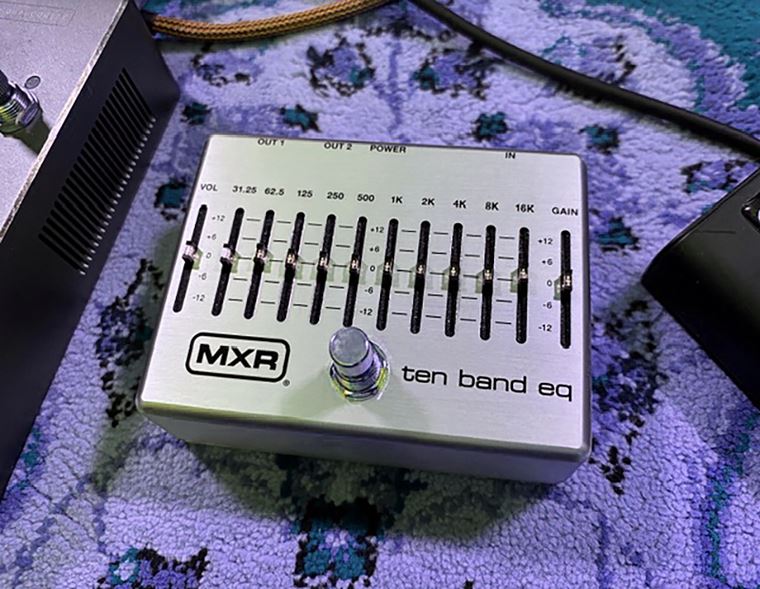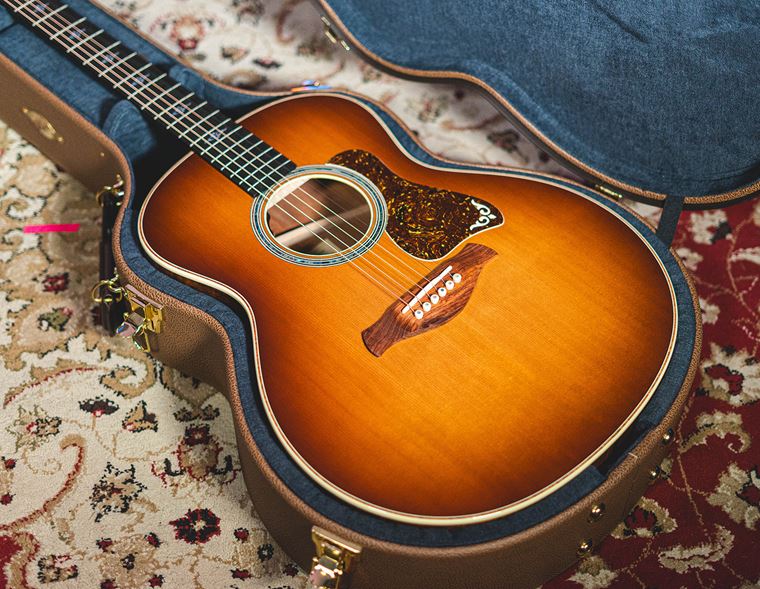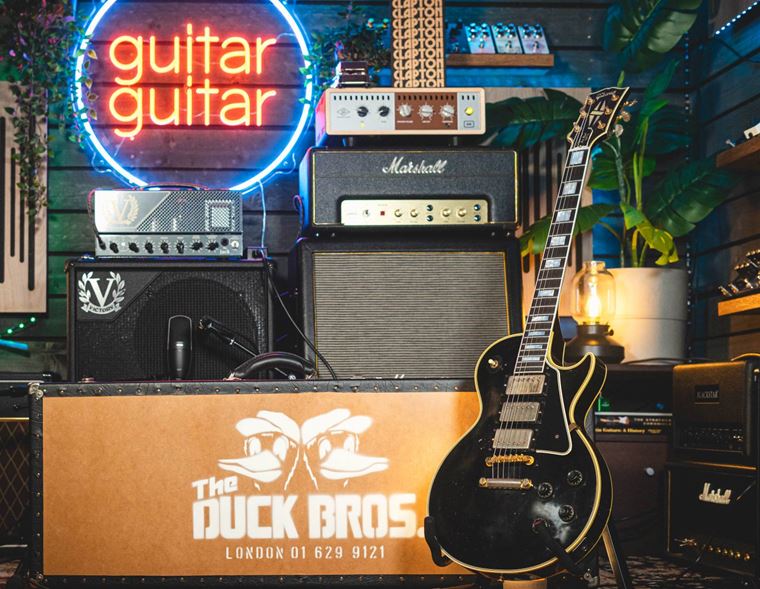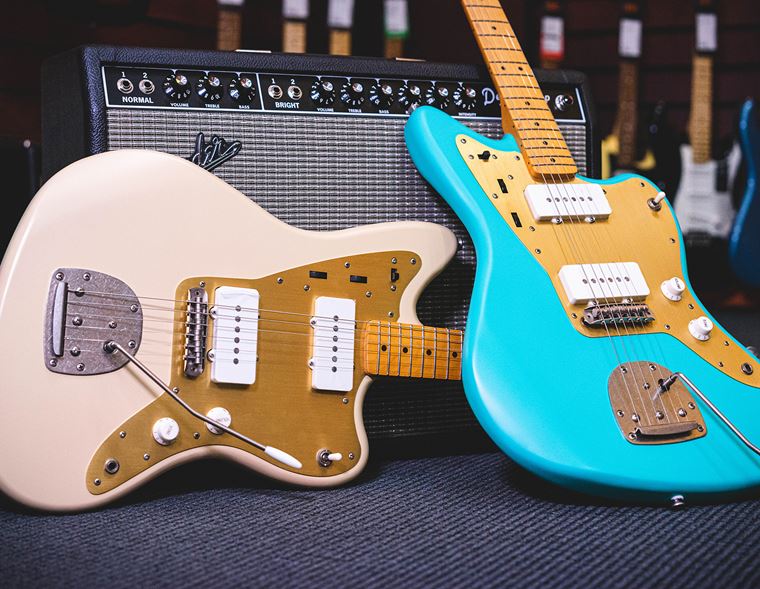What Les Paul? A Buyer's Guide
Published on 08 February 2021
The time has come for you to buy your first Gibson Les Paul.
You’ve decided that you want to enjoy that thick, sustaining tone and those elegant curves that combine to form Gibson’s finest creation.
Well played! It’s a classic for good reason. Few guitar designs match the romantic appeal of the Les Paul, and certainly no guitars have brought such a sound to popular music!
The trouble is, there are just so many options out there! Where to start?
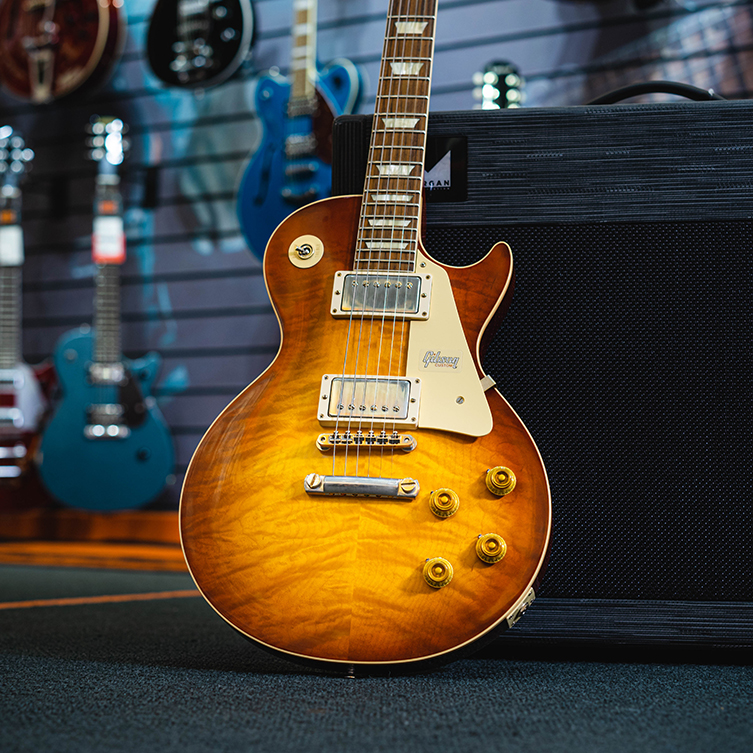
Don’t Panic!
Where, indeed! Well, as always, we are here for you. There are a great many Les Paul models out there, and at a glance, they all look pretty similar, right? In fact, they are actually a relatively diverse bunch, so we thought we’d highlight some of the clearer differences that you should perhaps be aware of as you carry on down the path towards Les Paul ownership.
In this blog, we’ll choose certain models to help illustrate what might be hiding ‘underneath the hood’, as it were, and we’ll take in a range of different price points so you can better understand what that extra outlay will actually buy you. Our choices will not be exhaustive or definitive, just illustrative of what’s available.
There’s No Such Thing as a Bad Guitar
What we won’t do, however, is tell you what is ‘better’. We don’t really think that’s how things work, given the range of factors involved. For example, it is probably fair to say that a five thousand pound Custom Shop Gibson Les Paul is objectively ‘better’ than a five hundred pound Epiphone Les Paul, but that’s neither much of a revelation nor is it fair to make such a comparison in the first place! We don’t expect any players looking for either of those examples to give much interest to the other, for fairly obvious reasons. We’re hoping to look at this subject from the point of view of fellow guitarists who’ve had the direct experience of handling and playing all of these instruments. We want to explain the differences in the wide range of Les Paul models that exist, in order to bring some clarity to a somewhat busy subject. There’s pretty much no such thing as a ‘bad guitar’ these days. More or less expensive, yes, but all of our choices today are instruments we would use ourselves.
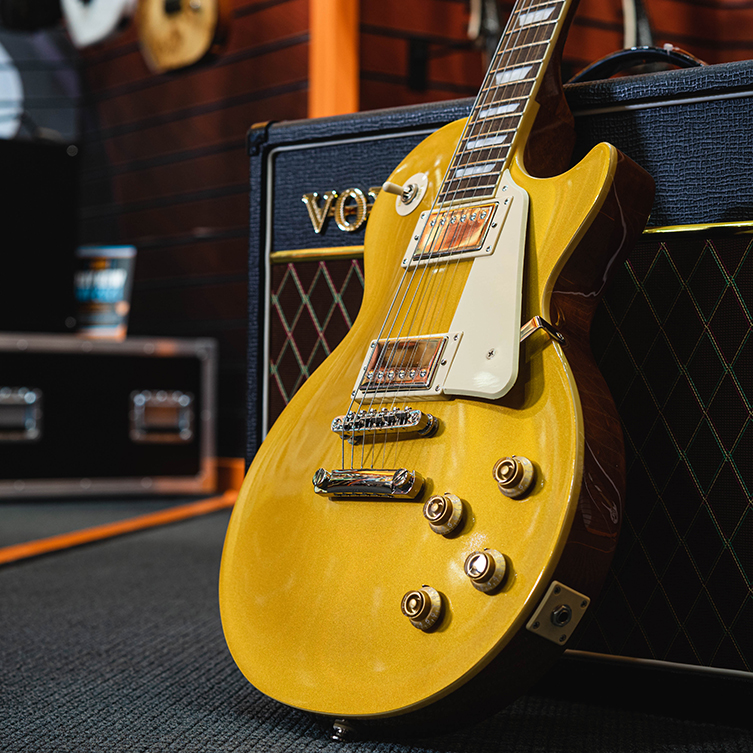
The Standard
One thing is worth bearing in mind, though. We are going to restrict our overview to models which can largely be described as ‘Les Paul Standards’. In other words, we’ll be omitting Les Paul Juniors & Specials, mainly because they are quite specifically different guitars in both specification and design. We’ll be focusing on single cutaway guitars with carved tops and (mainly) humbucking pickups. This keeps the comparative terms sensible: we love Les Paul Juniors, but they sound entirely different to what we’d determine as the ‘Les Paul sound’ (they were designed to be completely different guitars, let's be fair), so it’s somewhat beside the point to have them thrown in here.
Still with us? Then let us begin...
Relative to All
So, we’re just about to delve into some Les Paul models, but let’s first save ourselves a little comparison time here by determining which specs and design features you can expect to find throughout. Firstly, a Les Paul is made from Mahogany. Most models will have a slice of Maple on top of the body, but not all! Mahogany is a dense-sounding wood, and the brighter Maple adds top end to the tone, as well as decorative beauty. Les Pauls without the Maple top are therefore likely to sound thicker and more ‘midrangey’. This is neither good nor bad, just slightly different.
The necks are always glued in or ‘set’. They all have a 24.75” scale length, which is not considered ‘short scale’ but is still noticeably shorter when compared to the more ‘regular’ 25.5”. This makes string bending a good deal easier, which helps explain why lead players love the Les Paul so much! A 12” fingerboard radius is almost always used. One of our choices today eschews that, but that’s very much an exception to the rule. A 12’ radius is relatively flat compared to Fender-style guitars, and again, this is thought of as being more suitable for lead playing, since the strings won’t suffer from ‘choking out’ at higher playing positions.
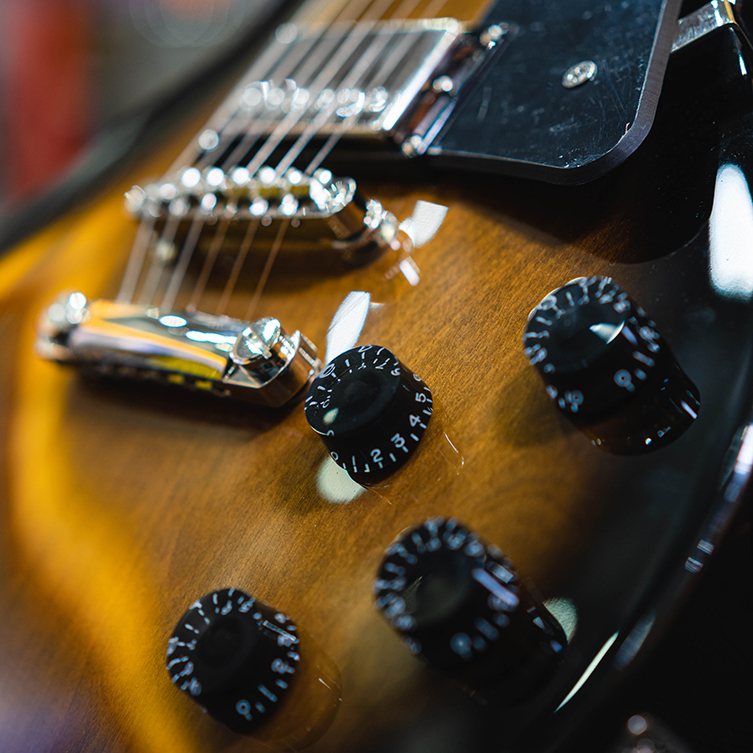
Almost all Les Pauls have 22 frets. Very, very occasionally there will be 24 frets (mainly on Epiphone and ‘alternative’ brands) and never, ever will there be 21! The vast majority of Les Paul guitars feature two electric pickups and four control knobs. Whilst the functions of these knobs can vary (we’ll see special control circuits in this article), you’ll almost always encounter them as two volumes and two tone controls, one for each pickup.
Affordable Choices
Let us begin with some more affordable choices, then! Our first pair of Les Pauls serve as fine entry points to this style of guitar. We’ve matched one incredibly popular model from Epiphone – Gibson’s official ‘imported’ line of non-American replicas – and one carefully chosen Les Paul from Gibson USA’s less pricey ranks. We think, given how much handwork goes into these lower priced Gibsons, it’s amazing that we can have them for the prices they are currently selling at. There has never been a better time to by a Les Paul guitar, so let’s check out our first pair of instruments.

Epiphone Les Paul Standard 60s
First up in our Les Paul selection is this surprisingly high-spec Epiphone Les Paul Standard 60s. This is from Epiphone’s newly redesigned catalogue of Epiphone Les Paul guitars and offers a serious whack of value!
First off, let’s be clear: Epiphone are owned by Gibson so this guitar should be thought of as an official, licensed replica, not a ‘Les Paul copy’. It is not a Gibson, but it is a genuine Les Paul. No other companies can say that. Okay, let’s see what we have here...
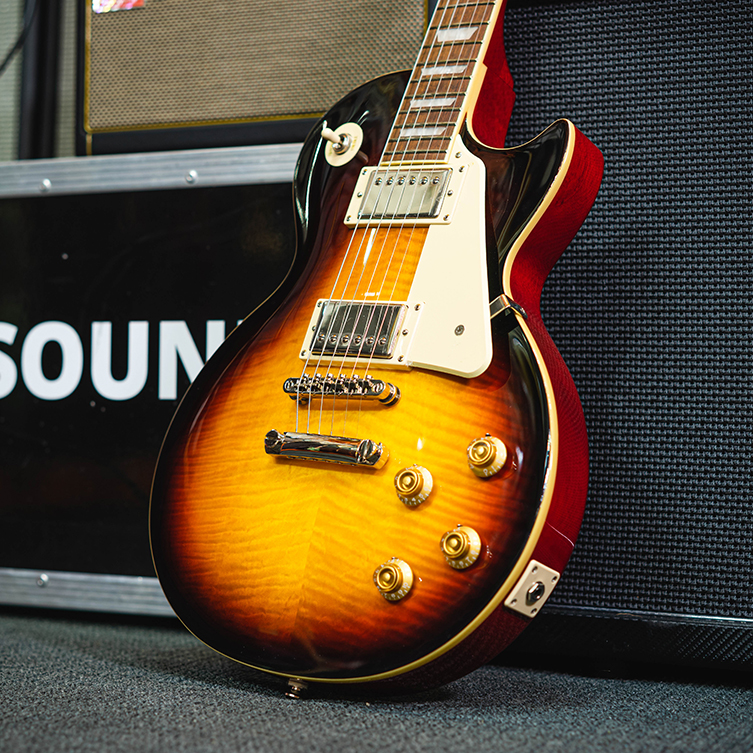
The curves are all there, and the newly redesigned headstock looks great. We are fans of Epiphone’s most significant update to their range in decades! There have been extensive improvements made across the board, starting with an actual AA figured Maple veneer on the body’s top! Yes, this is no printed graphic, it’s a proper piece of timber! This is a good indicator for the levels of quality adhered to elsewhere on the guitar.
For example, Grover tuners are used, which are one of the world’s top tuner brands, and are used on Gibson guitars, too. Also, we have specially designed ‘ProBucker’ pickups, which are definitely a step up from regular ‘stock pickups’ in this price range. Epiphone have sought to capture some of that vintage Les Paul tone in a mass marketed part, and their efforts have not been wasted. Supporting this, the pots inside the control panel are CTS branded, which is even better quality than some guitars that cost twice as much!
We’ve opted for the 60s model here with it’s slimmer neck, but a 50s Les Paul Standard variant is available, too. We suggest trying both styles and seeing which neck profile works better for you. Either way, this is a ton of guitar for the money!

Gibson Les Paul Tribute Satin
Our other affordable choice is a bona fide USA-made Gibson. This Gibson Les Paul Tribute Satin model keeps the cost down by dispensing with lots of the more time-consuming decorative elements of the build (time is money) like binding on the body and fingerboard, whilst keeping the most important tonal elements in place. So, this Gibson Les Paul Tribute model still has the Mahogany body, the Maple top (though there is no AA flame, again for cost reasons), the Rosewood fingerboard, great pickups and the all-important Gibson logo on the headstock!
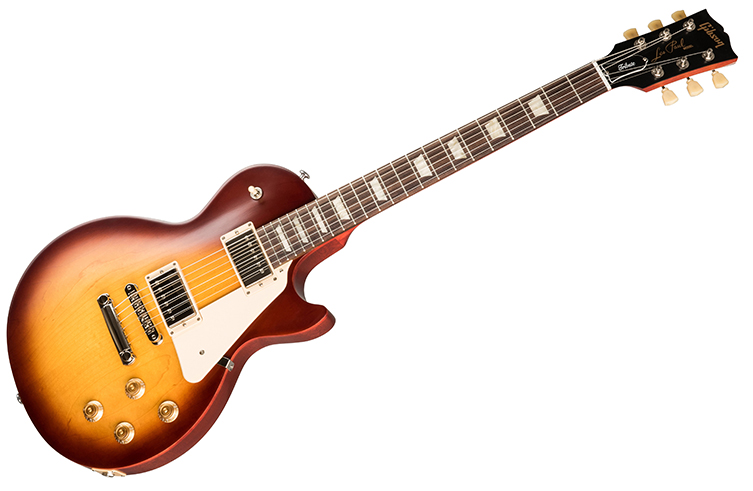
Looking deeper, we learn that this model has what’s known as ‘Ultra Modern Weight Relief’, which translates as a series of empty spaces, or chambers, carved into the Mahogany body (sealed henceforth by the Maple top) in order to bring down some of the Les Paul’s notoriously ungainly weight. Some players are happy about this, and others complain that removing this wood takes away from the tone. We think this is somewhat of a subjective situation, since one’s tone ultimately is formed with the fingers, the guitar and, in a significant way, the amplifier. Add to this different pickups, different levels and styles of overdrive etc, and it becomes really rather difficult to be definitive about whether the weight relief affects tone one way or another.
What we would say is that, if light guitars are appealing or necessary to you, look out for the weight relief: Gibson offer it with several models, and it may make a lot for difference for you! Some guitarists are put off using Les Pauls because they have back or shoulder problems: this need no longer be the case!

So, moving on, we love the 490 R (rhythm) and T (treble) pickups used here. Gibson use these pickups on many models and they always sound rich and sustaining with grit and bite. Other notable features with this guitar include a satin nitrocellulose finish (‘nitro’ finishes are a big part of the Gibson feel) and a ‘rounded’ neck profile that is, to us, somewhere between the 60s slim taper and the 50s C-shape.
This is the least expensive ‘proper Gibson Les Paul’ that Gibson currently make, at least according to our rule of sticking to the Les Paul Standard style as much as we can. If you can do without the binding, the figured top and the glossy finish, you’ll bag yourself a fantastic workhorse with a ton of pedigree and attitude.
The Classic Choice
This area of the market is where we move into what we’d perhaps think of as the ‘real deal’ Les Pauls. This is where we find American-made Gibsons which look, sound and feel like the iconic myth we all know and love. More expensive than the Tributes and Studios, the choices in this section are still within the reach of serious players. They are professional tools and things of beauty. Let’s take a look...
Gibson Les Paul Standard
This is the backbone of Gibson’s empire. The Gibson Les Paul Standard is what you’re in this game for, frankly, and the current iterations are absolutely fantastic. As with the Epiphones, Gibson offer 50s and 60s variants, and for most players, the main difference will be noticed with the neck profile. The Gibson Les Paul Standard 50s has a decidedly more substantial neck profile when compared to the Les Paul Standard 60s. Which is better? That’s very much up to you! We don’t think the bigger neck slows you down any more than the slimmer neck is ‘shred-friendly’, to be honest! Both feel great and it’s a matter of what you want your hand to feel when it grabs the guitar!

It’s worth noting that each version has its own finish choices, too, so if you’re dead-set on getting a Heritage Cherry Sunburst Les Paul, you’ll be going for a 50s model! Make sure you have a good look at all the bursts, though, because the Iced Tea and Unburst Les Pauls look absolutely stunning too!
Now, what of the other features? First off, we have absolutely no weight relief in these models. These are ‘full-fat’ Les Pauls, and that’s in response to a wide number of guitar fans asking over and over for Gibson to offer this! If you want weight relief, as we’ve noted, we have some other choices for you...
“You’ll be able to happily go from Mark Knopfler to Metallica with no trouble.”
The pickups are Gibson Burstbucker 1 and 2 humbuckers. Now, these have been made with alnico II magnets in order to bring about some much-desired ‘PAF tone’. We are sure you’ve at least heard this term before, but briefly, PAF stands for Patent-Applied-For and it was what was stamped on the back of the pickups in late 50s Les Pauls. These guitars, and the pickups in them, are widely regarded as the most glorious, most beautiful sounding and most sought-after sounds in the guitar universe. PAF is where it’s at, and these Burstbuckers have lots of that tone in them! They have a little more output, in fact, which makes these pickups ‘vintage flavoured’ but still tough enough to cause a ruckus in today’s musical climate.

The fact is, endless pickup manufacturers will claim to have recreated the PAF sound better than anyone else, and it’s not exactly easy to compare any pickups, far less ones from million-pound vintage guitars! We think these are fantastic sounding pickups, and you’ll be able to happily go from Mark Knopfler to Metallica with no trouble.
Beautiful burst finishes, hand-wired circuitry, a feel to die for and a tone to be swiftly resurrected for make the current Gibson Les Paul Standards indecently good. If this was the model you already had your eye on, then buy without hesitation, because they are fantastic.
Gibson Les Paul Classic
Gibson’s current catalogue organises their instruments into two ranges: the Original Collection and the Modern Collection. Broadly speaking, guitars in the Original Collection (from which the Les Paul Standard we just looked at is from) stick to more historical specs, like full body weight, traditional cirtuitry and so on. This Gibson Les Paul Classic is from the Modern Collection. Despite looking very similar to the Standard, there are some key differences that make this guitar ultimately quite distinct.

So, first off, there is a little weight relief on this guitar, but not the ‘Ultra Modern Weight Relief’ we encountered earlier. Gibson have used the ‘9 hole’ method here, which means they’ve literally drilled 9 holes in specific places to hollow out little bits of the timber, taking out some of the weight. It’s minimal and does help lighten the load. There’s still plenty of solid Mahogany here for bringing out those inimitable Les Paul tones, though! Again, the holes are made in the Mahogany and hidden by the Maple top.
Speaking of tone, you’ll have noticed that the guitar features ‘open coil’ humbuckers. In other words, there are no metal covers here, which some argue dull the tone slightly. Open coils are regarded as brighter, and these Burstbucker 61 R and T pickups add to that brightness with slightly less coil windings around each pickup’s magnet. Less windings generally mean a brighter tone. The magnet itself is an alnico V, which again supports a slightly crisper, less overtly ‘vintage’ sound.
Significantly, the control knobs all have a ‘push/pull’ function, so gently pulling on them until they click engages extra circuitry. On the Les Paul Classic, you get two coil taps (which not only give you single coil tones, but hum-cancelling single coil tones), a phase reversal switch (this brings out a nasally ‘Peter Green’ tone, which is sought after) and a function to bypass the tone circuit altogether, thus sending a hotter signal straight to the guitar’s output. That’s some collection of extra sounds, all authentic and available at your fingertips!
Other specs involve a Slim Taper neck profile and gold ‘top hat’ knobs for a subtly different look.

We’d perhaps say that this model is aimed at players who perform live regularly, given the extra tonal choices and slight weight relief. It still looks absolutely 100% classic Les Paul, and sounds fantastic, not to mention versatile. Remember, if you want less brightness (and these guitars are nothing like as bright as, say, a Telecaster), you always have tone controls there to take some of the ‘top’ off your sound! Keep that in mind! The brightness is relative to other Les Pauls, which all have a darker tonality than other guitar types.
There are some cool finishes available for the Les Paul Classic (on top of the expected bursts) like Translucent Cherry and Ebony, so if you want your Les Paul to be a little more individual, the Classic may well be your top bet!
Hot Rodded Choices
Now, as you already know, Les Pauls are powerful sounding guitars to begin with, so the idea of a hot-rodded model will perhaps be more for players of hard rock and metal. All of the above guitars are more than suitable for such genres, of course, but it’s fun to have something that’s designed and assigned expressly to take no prisoners! As such, we’ll take in a few models that like nothing more than to be set loose with high gain amps and bad attitudes!
Epiphone Les Paul Prophecy
Our heads were all quite significantly turned when these guitars first arrived recently. The Epiphone Les Paul Prophecy is a mighty beast indeed, and looks pitch-perfect as a hard rock animal with its satin finish and brushed metal appointments.
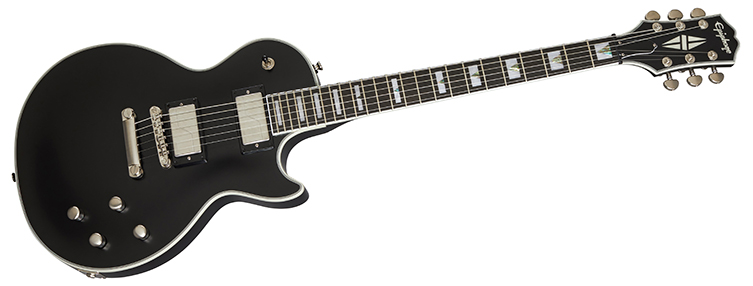
The major things to check out here are the 24-fret Ebony fingerboard and Fishman Fluence active pickups. These significant upgrades put this Les Paul on another level altogether! Let’s talk about the neck first and then the pickups.
So, the slim neck has a full two octaves’ worth of jumbo frets, which allows you total freedom when shredding and playing high register parts. As mentioned before, 24 frets is highly unorthodox on a Les Paul, so this is quite important! Jumbo frets let you play notes without having to use as much finger pressure, so the lighter touch results in faster playing. In addition to this, the Les Paul Prophecy has a sculpted heel (when the neck joins the body) to allow you easier access to those extra frets. The neck carve is slim and asymmetrical, so it fits the shape of your inner hand better. All of these things combine to make for a neck that is a speed-freak’s dream!

Now, the pickups. Fishman’s Fluence range are really taking over the active market right now, and with good reason. Fluence pickups offer two distinctly different tone styles, available at the pull of a tone knob. You get Vintage and Modern voices here, PLUS coil taps for each pickup! Vintage PAF tones, single coil glassiness and modern rock crunch are all easy to access from this one instrument. Impressive! A 9v battery supplies the power to these active pickups, so bear that in mind, and remember to remove the guitar lead after playing, since that engages the battery!
“We think this guitar is kicking some serious behind”
On top of all of that, you can enjoy some beautiful visuals inspired by the famous Les Paul Custom model (block inlays, multiple-ply binding on the body and headstock and a ‘split diamond’ headstock inlay) and a set of locking tuners, all included into the bargain. We think this guitar is kicking some serious behind. It has the Ultra Modern Weight Relief, too, so if you are an energetic performer, this choice may be a good shout!
Gibson Les Paul Modern
Now back to a Gibson USA model, and this Les Paul has a very cool, contemporary style! In many ways, the Gibson Les Paul Modern is a similar instrument to the Epiphone Prophecy, certainly in terms of some of the design details! For example, this USA-made Gibson also has an Ebony fingerboard (22 frets this time), a contoured heel, asymmetrical neck profile and Ultra Modern Weight Relief.
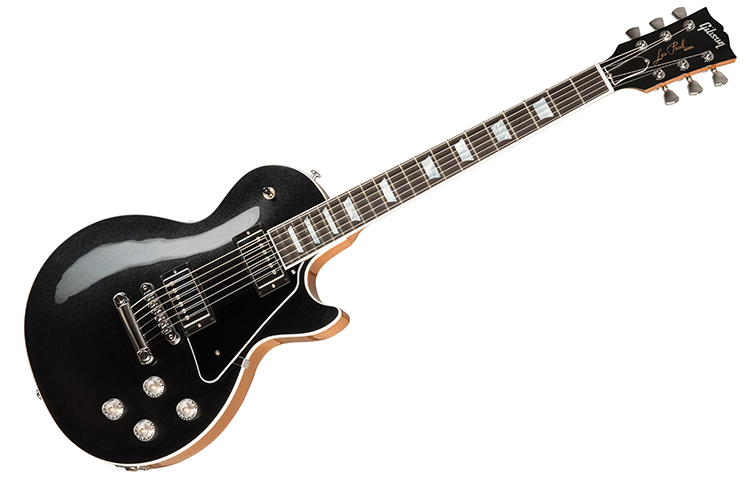
It comes in a brace of gorgeously sparkly finishes, unlike any other guitars in the range, and the sides and back are left ‘natural’ for a very striking two-tone look. This contemporary take on the Les Paul has locking tuners, extra push/pull circuitry (coil taps, phase switching and bypass, as with other models we’ve looked at) and some hotly wound Burstbucker Pro pickups to supply a more saturated, edgier sound than some of the guitars we’ve seen today.
This is a Rockstar’s guitar, make no mistake! The cool see-through control knobs and sparkles in the finish indicate that this is a Les Paul that wants to be seen! It may not be geared for the classic blues brigade, but if you play any slightly more glamourous genres, you’ll be well-matched to the Gibson Les Paul Modern.

Top-Dollar Choices
This section is where we look to the very top of the pyramid. These Les Pauls represent the summit of what’s available, for those who are ready and willing to pay for the best of the best. As we’ve seen already, all Les Pauls may look largely similar, but there’s a lot of devil in those details! Join us, then, as we reach for the stars...
Gibson Custom Shop 60th Anniversary 1959 Les Paul Standard
It’s the Holy Grail. It’s the Les Paul by which all others are measured. It’s the '59 Sunburst Standard, and you already know you want it. Authenticity is what you are paying for here, with this Gibson Custom Shop creation. This instrument is about as close as it is possible to get to the exact dimensions, materials, feel, build and sound of a vintage '59 Les Paul.
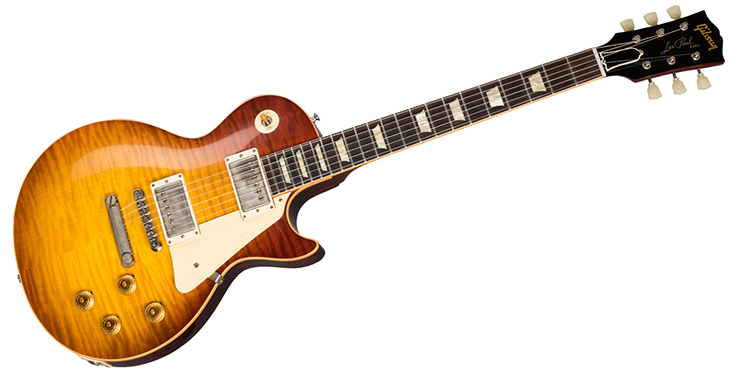
Les Paul Standards from the years 1958-60 are considered the finest of their kind ever produced. Not to say they were all the same (a 1958 neck is not the same as a 1960 neck by any means!), but there was a level of magical mojo connected to the few hundred guitars produced in this time which has never been surpassed. Legends abound of the phenomenal PAF tones, the supernatural levels of sustain and the unbelievable feel of such guitars. People literally write books about these Les Pauls!
The problem is, vintage examples now sell for hundreds of thousands of pounds. Yes, they cost the same as nice houses. So, with that in mind, the idea of paying between five and six thousand for an exhaustively researched replica, hand made by Gibson Custom Shop’s finest artisans, somehow seems pretty reasonable!
As we said, authenticity is key here for the Gibson Custom Shop 60th Anniversary 1959 Les Paul Standard and those like it. We’re talking about double hand-carved ‘dishes’ for the Maple tops, scrupulously selected timbers, painstakingly measured and hand-shaped neck dimensions, specially sourced plastics for the custom made pickguard and pickup surrounds...the list goes on. It’s legendary stuff, and for many, owning a Custom Shop 58-60 Les Paul Standard is the ultimate end goal.
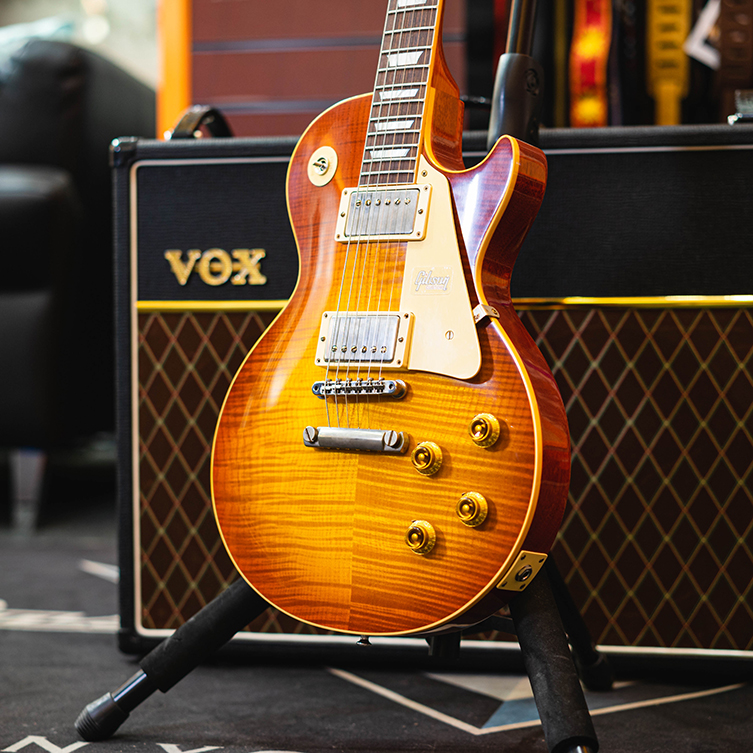
Sonically, these guitars are in a different league. All of our examples today are superb instruments, but if you care about minute characteristics in regard to bite, bloom, harmonic overtone, richness and depth of sound, then you’ll really appreciate why this type of Les Paul is sitting in the throne. Meticulously hand wound humbuckers with carefully selected, specific Alnico III humbuckers deliver you straight to the PAF-zone you’ve always dreamed of. Les Pauls just don’t get better, and that '59 neck profile is to die for.
One thing: don’t worry about whether you’re ‘up to the task’ as a player when considering such an investment. Consider instead what the guitar will give you back, consistently, for decades and decades, in terms of pleasure and performance, not to mention beauty. This is truly where it’s at.

Gibson Custom Shop 1957 Les Paul Custom 3 Pickup VOS Ebony
Ah, you’re somebody who wants to make a visual statement AND a sonic one. Quite right! Isn’t that what it’s all about? Well, this 3-pickup beauty is the end of the rainbow for you! If the 1959 Les Paul Standard is the Holy Grail, then this Gibson Custom Shop 1957 Les Paul Custom 3 Pickup sits right next to it in the ‘mythical genius’ stakes. Excalibur, maybe?
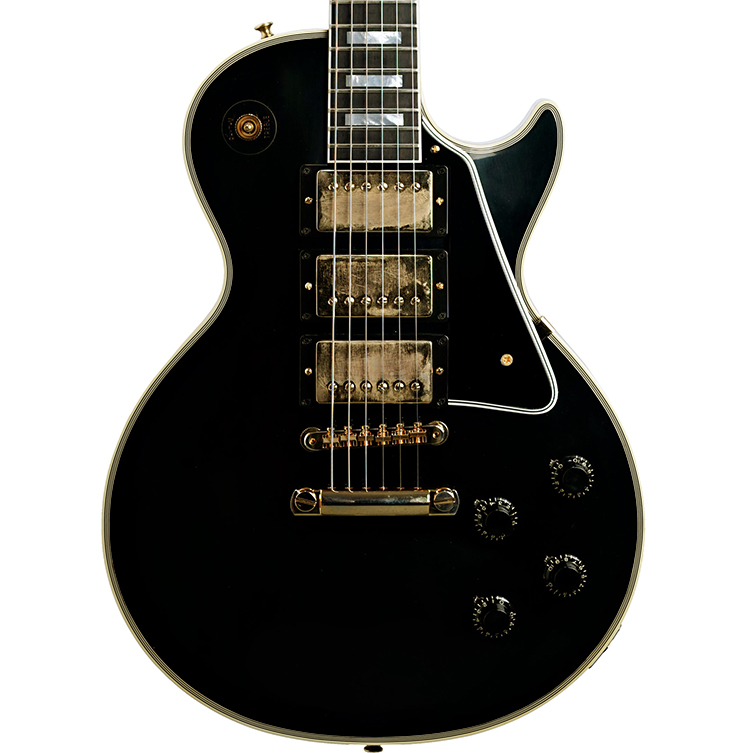
This sublime instrument has a body made from one single piece of mahogany, with no maple cap! A single piece! This means the tone will be absolutely enormous, not to mention thick and detailed. The ebony fingerboard will impart a little brightness to the top end, but this guitar is all about unadulterated power.
A chunky ‘C’ profile neck is directly in keeping with the instrument’s 1957 heritage, and the VOS finishing (Gibson’s proprietary, multi-level finishing process) gives this new guitar that appealing patina of the very light ageing of many decades past.
So, what of these three pickups? Well, they certainly increase the guitar’s spectacular visual properties, but it’s not all skin-deep. These are hand-wound, vintage alnico III humbuckers, designed to give full voice to that Mahogany body. You get an entirely different ‘middle’ position since it involves the middle and bridge pickups rather than the neck and bridge. This helps cut through that thick tone and provides a legitimately different voice to the guitar.
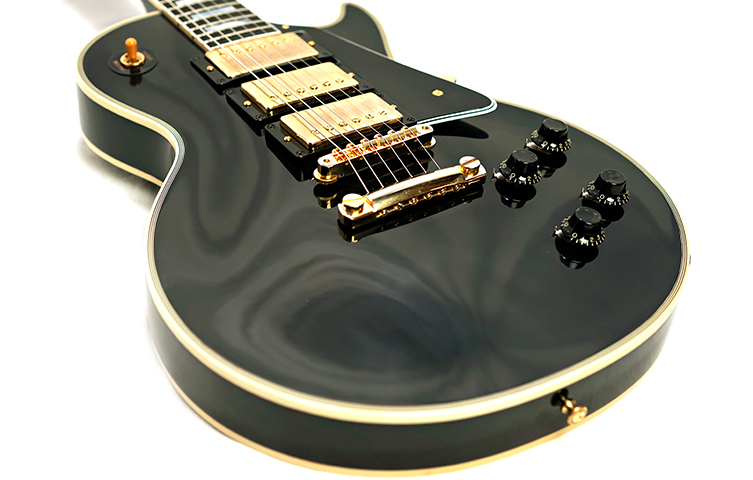
If we are being honest with ourselves, we think Les Paul Customs, be they 2 or 3 pickup varieties, are possibly the most charismatic guitars ever created. They sound specifically bigger and thicker (heavier, basically, but also more cello-like) than Standards, and that’s partly down to the missing maple on the top. Now, earlier in this blog, we did say that we’d keep things as ‘Standard’ as we could, but who in their right mind would be looking for a Les Paul in this top price bracket and leave out the Les Paul Custom? That would be madness! We’ve included this as an example of what’s available, and yes, it’s quite incredible. Guitars do not come more iconic, nor as flat-out handsome, as this.

Alternatives
So, we’ve covered ‘official’ Les Pauls, and there are many out there to choose from! So many, in fact, that we’ve left out excellent choices like the Gibson Les Paul Studio (everything you need, nothing you don’t), the great Standards with the P90 pickups and the superb Slash signature models. This guide is here to give you a broad understanding of the playing field, so please click through to our product pages to learn more about these other Les Pauls.

Now, it’s a fact that many other companies have, over the years, taken the Les Paul as a blueprint for their own variations on the theme. Some of these are fantastic guitars in their own right, and therefore it makes sense to acknowledge that here and offer up a few alternatives. We think that most players looking for a Les Paul will generally only accept a Gibson Les Paul, but none the less, here are two non-Gibson contenders!
ESP E-II Eclipse Full Thickness
ESP are, thanks to Metallica’s long-time patronage, a huge name in the hard rock field. They are known for stylish design, stringent build quality and an overall ‘attitude’ that goes down well with musicians of a heavier persuasion.
This model is from the E-II range, formerly known as ESP Standard. The ESP E-II Eclipse is made in Tokyo with premium materials and hardware, and has a real ‘performance’ vibe. It’s stunning too, with a full thickness Mahogany body (Eclipses are often a good deal skinnier) and sumptuous Tobacco Burst finish over the figured maple cap.
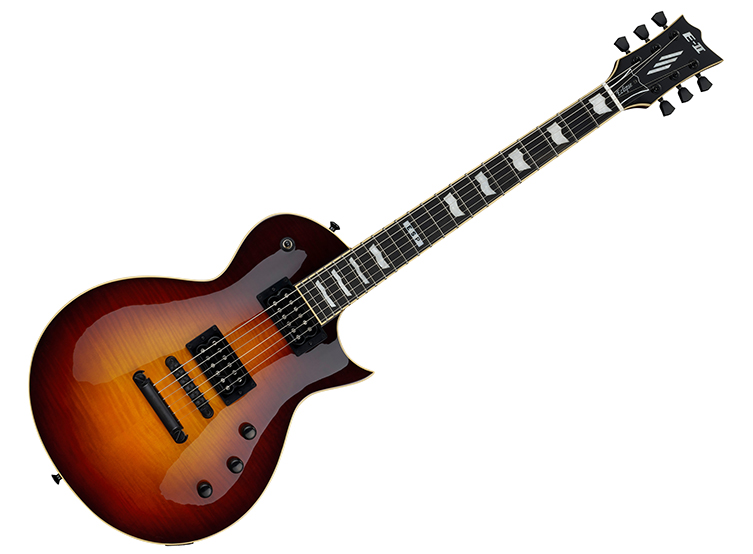
There’s really no mystery as to the Eclipse’s inspiration, though we’d certainly not ever mistake the ESP for a Les Paul, unlike many other brands out there. ESP have added their own edgy aesthetic and blended it with the timeless style of the world’s most famous ‘singlecut’ to great effect.
A set of active Fishman Fluence pickups, like we saw on the Epiphone Prophecy, are here, offering the same vast tonal potential. A thin U-shaped neck and 22 extra jumbo frets make playing this particularly easy. If your style is perhaps more technical than traditional, it would definitely be in your interests to try this Eclipse out.
PRS Tremonti
PRS are known throughout the world for the stunning beauty of their guitars, and their remarkable build quality. These factors are both exemplified in the frankly fantastic PRS Tremonti model. Mark Tremonti, lead guitarist of Alter Bridge and formerly of Creed (same band, different singer) has been a PRS endorsee for years and his models are amongst the most popular, going way past his fanbase and into the hands of guitarists who want exceptional singlecut guitars.
With whammy bars.
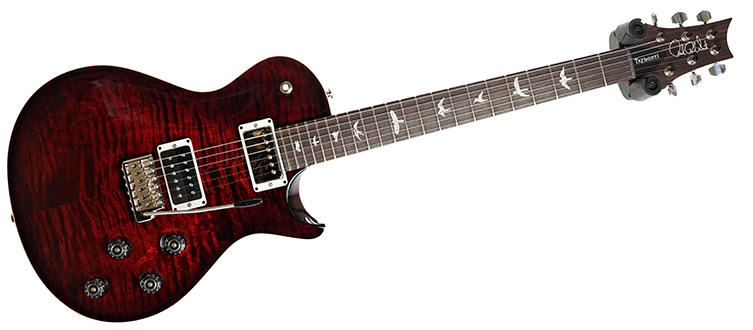
Yes, the Tremonti has PRS’ own-design tremolo, and it’s a good one! It’s unusual for Les Paul-inspired guitars to have whammy bars, but not unheard of. Bigsby tremolos, of course, are relatively common, and Alex Lifeson of prog giants Rush has been seen with a Floyd Rose-equipped Les Paul, so there is certainly a precedent there! PRS’ tremolo is an adaptation on the traditional Fender-style trem and is famous for being smooth to operate.
Everything about the PRS Tremonti screams ‘class’, from the spectacular figured maple top to the classic bird inlays – both of which are PRS trademarks - but it’s the overall build that impresses most. PRS guitars are pretty things, for sure, but they are built for heavy-duty business! If you are in the market for a top-quality singlecut guitar, you owe it to yourself to add one of these to your list. Check out our exclusive interview with Mark Tremonti for more of his thoughts on these guitars.
We generally keep a selection of Tremonti models in stock, and they are always as stunning as this Fire Red example.
Final Thoughts
We hope that some of the mist has cleared now, and that you can make better sense out of all of the seemingly endless options out there. Choosing a new Les Paul is an exciting thing indeed, and hopefully this guide will help you navigate your way to the right model for you!
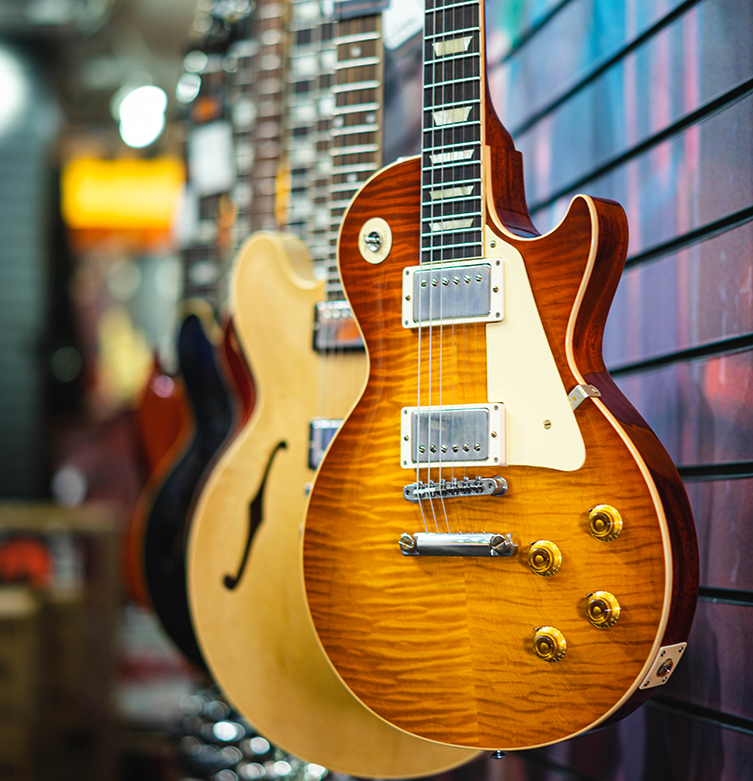
Naturally, we have not covered every single iteration that Gibson and Epiphone produce. There are a great many Custom Shop variations on Les Pauls from 1957 to 1968, for example, but our guide hopefully helps explain what type of factors to look out for.
The Les Paul for you is out there. Hopefully we have it! Get in contact with us and we’ll certainly help you find it. Until then, happy hunting!


